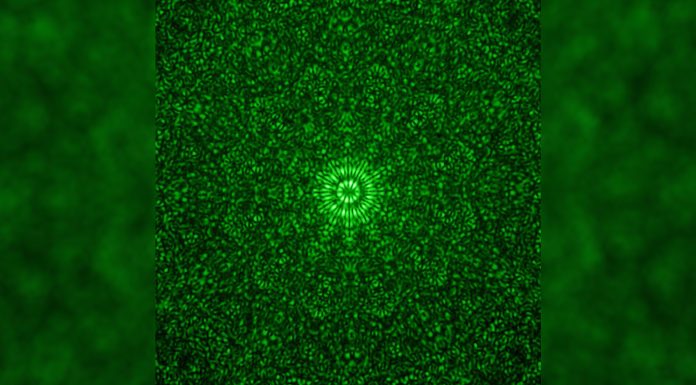
In a groundbreaking study, physicists at Aalto University in Finland have developed a new way to send large amounts of information using tiny “hurricanes” of light, also known as light vortices.
This innovation could transform data transmission by allowing more data to be sent through optical fibers in a smaller space.
In today’s digital world, data is often encoded into laser light and sent through optical cables.
However, as the demand for data grows, scientists are constantly looking for new ways to increase the amount of information these cables can carry.
Researchers at Aalto University’s Department of Applied Physics have discovered a new approach by creating small hurricanes of light that can carry data in new, powerful ways.
The team’s approach involves manipulating metallic nanoparticles, tiny particles much smaller than a human hair, that interact with electric fields.
By arranging these particles in specific patterns, known as “quasicrystals,” they were able to produce complex light vortices that could potentially carry large amounts of information. This work was developed by Doctoral Researchers Kristian Arjas and Jani Taskinen, under the guidance of Professor Päivi Törmä in Aalto’s Quantum Dynamics group.
Light vortices are unique beams with a dark center, surrounded by a ring of bright light. This dark center, much like the calm eye of a hurricane, forms because the electric field surrounding it points in different directions, creating a swirling effect.
Scientists have long known that the shape and arrangement of particles can influence the type of light vortex created.
For example, simple square or hexagonal arrangements of particles create single or double vortices, while more complex arrangements, like octagons, are needed to produce more intricate vortices.
The Aalto team has now unlocked a way to create shapes that could support any kind of vortex, potentially expanding the possibilities for encoding information in light.
To achieve this, the team used approximately 100,000 metallic nanoparticles, each about a hundredth the width of a human hair.
They placed these particles in areas of the electric field where there was almost no vibration or “dead spots,” which allowed them to isolate and control only the most interesting parts of the electric field.
This discovery could lead to future applications in fields like telecommunications, where light is often used to send information. According to Arjas, this technology could increase the amount of data sent over optical fibers by eight to sixteen times.
However, it may take years of engineering to make this method practical for widespread use.
The Aalto University team conducted this research with the support of OtaNano, a research infrastructure specializing in nano-, micro-, and quantum technologies.
While the project is still in its early stages, the team is excited to explore new ways of using light vortices to improve data transmission, with potential applications that could change the way information travels across networks worldwide.



